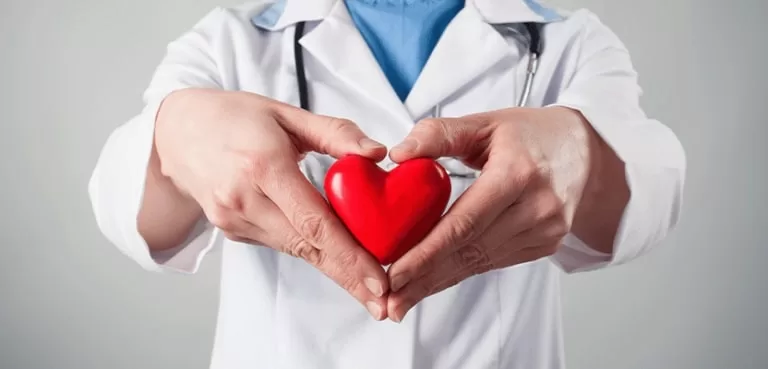+90 533 813 89 77
info@bookingforhealth.com
What is Cardiovascular System?
The cardiovascular system is a complex network of organs and tissues that work together to pump blood, oxygen, and nutrients throughout the body. It is made up of the heart, blood vessels, and blood. The cardiovascular system works in coordination to ensure that the body’s cells receive the oxygen and nutrients they need to function properly, while also removing waste products. The heart pumps oxygen-rich blood to the body’s cells through a network of blood vessels. The blood vessels, in turn, transport the blood to the cells and bring the deoxygenated blood back to the heart to be re-oxygenated.

What are Cardiovascular System Diseases?
The cardiovascular system is made up of the heart, blood vessels, and blood, and diseases that affect this system are referred to as cardiovascular diseases.
- Coronary Artery Disease: This occurs when the coronary arteries, which supply blood to the heart muscle, become narrowed or blocked by plaque buildup. This can lead to chest pain, shortness of breath, and heart attack.
- Heart Failure: This occurs when the heart is unable to pump enough blood to meet the body’s needs. Symptoms include fatigue, shortness of breath, and swelling in the legs and ankles.
- Heart Valve Disease: This occurs when one or more of the heart valves do not function properly, causing blood to flow in the wrong direction or leak back into the heart.
- Aortic Aneurysm: This is a bulging in the wall of the aorta, the main blood vessel that carries blood from the heart to the body.
- Hypertensive Heart Disease: High blood pressure can lead to the thickening of the heart muscle and damage to the blood vessels, which can increase the risk of heart attack and stroke.
- Rheumatic Heart Disease: It is a complication of rheumatic fever which is caused by a streptococcal infection. It can cause damage to the heart valves.
- Pulmonary Embolism: It is a serious condition that occurs when a blood clot travels to the lungs and blocks an artery.
What are Cardiovascular System Treatments?
Cardiovascular system treatments include a range of medical and surgical options to treat diseases and disorders of the heart and blood vessels.
- Medications: These include blood pressure-lowering medications, cholesterol-lowering medications, blood thinners, and medications to treat heart failure.
- Lifestyle Changes: Making changes to diet, exercise, and smoking habits can help improve heart health and lower the risk of heart disease.
- Surgery: Surgery is used to treat a range of cardiovascular conditions, including coronary artery disease, heart valve problems, and aneurysms. Common surgical procedures include coronary artery bypass surgery, valve replacement or repair surgery, heart transplant surgery, and surgery to repair or remove diseased blood vessels.
- Angioplasty and Stenting: Angioplasty is a procedure in which a small balloon is used to open a blocked or narrowed blood vessel. Stenting is a procedure in which a small metal mesh tube is placed in the blood vessel to keep it open.
- Cardiac Rehabilitation: This is a program of exercise, education, and counseling that helps people recover from heart attacks, heart surgery, or other heart-related problems.
- Devices: Implantable devices such as pacemakers and defibrillators can be used to treat heart rhythm disorders and heart failure.
- Transcatheter Aortic Valve Replacement (TAVR): It is a less invasive alternative to traditional aortic valve replacement surgery that is used to treat severe aortic stenosis.
The specific treatment will depend on the individual case and the type and severity of the cardiovascular condition. A team of healthcare professionals will work together to determine the most appropriate treatment plan for each patient.

How to Prevent Cardiovascular Diseases?
There are several ways to prevent cardiovascular diseases, including:
- Eating a Healthy Diet: Consuming a diet that is low in saturated and trans fats, cholesterol, sodium, and added sugars can help reduce the risk of cardiovascular disease. Eating plenty of fruits, vegetables, whole grains, lean proteins, and healthy fats can help maintain a healthy weight and reduce the risk of heart disease.
- Maintaining a Healthy Weight: Excess weight can increase the risk of heart disease, so maintaining a healthy weight through diet and exercise is important.
- Engaging in Regular Physical Activity: Exercise can help lower the risk of heart disease by improving cardiovascular fitness, controlling weight, and reducing stress. Aim for at least 150 minutes of moderate-intensity aerobic activity or 75 minutes of vigorous-intensity aerobic activity per week, or a combination of both.
- Not Smoking or Using Tobacco Products: Smoking and using tobacco products can greatly increase the risk of heart disease.
- Controlling Cholesterol, Blood Pressure, and Blood Sugar: High cholesterol, high blood pressure, and high blood sugar levels can all increase the risk of heart disease. Keeping these levels in check through medication, diet, and exercise can help prevent heart disease.